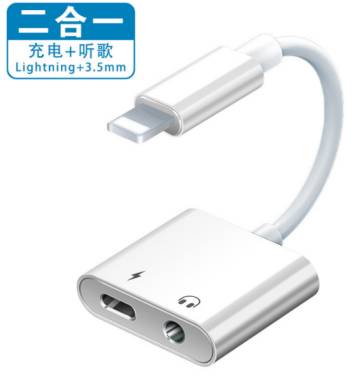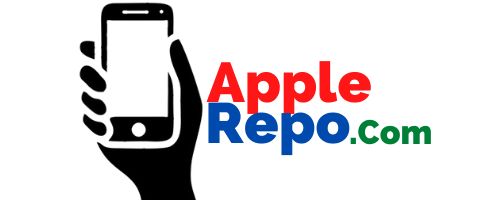Bridging the Gap: iPhone Adapter for Headphones Complete Compatibility and Solution Guide
The controversial elimination of the 3.5mm headphone jack from iPhones starting with the iPhone 7 in 2016 fundamentally changed how users connect their favorite wired headphones. iPhone adapter for headphones solutions emerged as essential accessories enabling continued use of traditional audio equipment with modern Apple devices, bridging the technological transition from analog to digital audio connectivity.

Nearly a decade after “DongleGate” sparked widespread criticism, headphone adapters remain indispensable for millions of iPhone users unwilling to abandon high-quality wired headphones for wireless alternatives. The adapter market has matured significantly, offering options from Apple’s simple $9 solution to sophisticated DAC-equipped dongles providing audiophile-grade sound quality that actually exceeds the original headphone jack’s capabilities.
This comprehensive exploration examines every aspect of iPhone headphone adapters including compatibility requirements across Lightning and USB-C models, audio quality considerations, simultaneous charging solutions, and expert recommendations helping users select optimal adapters matching their specific iPhone models and listening preferences.
Can I Use Headphones with Adapters for iPhone?
Yes, headphones work perfectly with adapters on iPhone, providing full functionality including audio playback, microphone access, and inline remote control operations. Apple designed the Lightning and USB-C ecosystems to fully support analog headphones through adapters containing integrated digital-to-analog converters (DACs) that transform digital audio signals into analog waveforms your headphones require.
The adapter acts as an external sound card processing digital audio from your iPhone and converting it to analog signals compatible with traditional 3.5mm headphones. This external processing actually provides potential audio quality advantages over the internal DAC previously built into iPhones with headphone jacks, particularly with premium adapters incorporating high-quality conversion chipsets.
Compatibility extends to all headphone types including wired earbuds, over-ear headphones, gaming headsets, and even external speakers with 3.5mm auxiliary inputs. The adapters support standard TRRS (Tip-Ring-Ring-Sleeve) connectors enabling microphone functionality for phone calls, voice recordings, and voice assistant activation.
Performance equals or exceeds the original headphone jack experience, with Apple’s official adapters using the same DAC chipset found in the iPhone 6s. Independent testing confirms that properly designed adapters introduce no noticeable audio degradation, latency, or quality loss compared to direct headphone jack connections.
Is There an Adaptor to Allow Regular Headphones to Fit an iPhone?
Multiple adapter types enable regular 3.5mm headphones to connect with iPhones depending on your specific iPhone model. iPhone 7 through iPhone 14 models require Lightning to 3.5mm adapters, while iPhone 15 and newer models using USB-C ports need USB-C to 3.5mm adapters for headphone compatibility.
Apple’s official Lightning to 3.5mm adapter costs just $9 and provides reliable functionality with MFi (Made for iPhone) certification ensuring perfect compatibility. The adapter includes a digital-to-analog converter and headphone amplifier capable of driving most consumer headphones with audio quality matching the iPhone 6s’s internal audio hardware.
USB-C to 3.5mm adapters serve iPhone 15, iPhone 16, and iPhone 17 models that transitioned to universal USB-C connectivity. Apple’s USB-C headphone adapter retails for approximately $9, providing the same reliable functionality as the Lightning version while enabling cross-compatibility with iPad, MacBook, and even Android devices.
Third-party alternatives from manufacturers like Belkin, Anker, UGREEN, and UNBREAKcable offer additional features including braided cables for durability, longer lengths for flexibility, and premium DAC chips for enhanced audio quality. These options range from $10 to $30 depending on features and build quality.
Can I Plug Headphones into an iPhone?
You cannot plug standard 3.5mm headphones directly into iPhones released after 2016, as Apple eliminated the traditional headphone jack starting with the iPhone 7. Modern iPhones require adapters, Lightning/USB-C headphones, or wireless Bluetooth alternatives for audio connectivity.
The last iPhone models with headphone jacks were the iPhone 6s and iPhone SE (1st generation) released in 2016. These models accept standard 3.5mm headphone plugs directly without requiring any adapters or additional accessories.
Direct connection alternatives include purchasing headphones with integrated Lightning connectors for iPhone 7-14 models or USB-C connectors for iPhone 15 and newer. These specialized headphones plug directly into iPhone charging ports, eliminating adapter requirements while often providing enhanced audio quality through digital connectivity.
Wireless Bluetooth headphones represent Apple’s preferred solution, with the company heavily promoting AirPods and Beats products designed for seamless iPhone integration. However, many users prefer wired connections for superior audio quality, zero latency, and elimination of battery charging requirements.
What If My Phone Has No 3.5mm Jack?
Adapters provide the primary solution for iPhones lacking headphone jacks, converting Lightning or USB-C ports into traditional 3.5mm connections. This approach enables continued use of existing headphone collections without requiring complete replacement of audio equipment.
Lightning-equipped headphones designed specifically for iPhone 7-14 models offer adapter-free connectivity through direct Lightning connector integration. While more limited in selection than traditional headphones, these options provide digital audio transmission potentially superior to analog connections.
USB-C headphones work with iPhone 15 and newer models, offering broader compatibility across multiple device types including Android phones, tablets, and computers. The universal USB-C standard finally enables true cross-platform headphone compatibility after years of proprietary connectors.
Bluetooth wireless alternatives eliminate physical connections entirely, though introducing potential compromises including audio compression, connection stability concerns, and battery management requirements. Modern Bluetooth codecs like AAC and aptX significantly narrow the quality gap compared to wired connections.
Apple Lightning to 3.5mm Headphone Jack Adapter
Apple’s official adapter remains the gold standard for iPhone 7-14 compatibility, providing guaranteed performance through genuine Apple engineering and MFi certification. The compact 3-inch adapter includes a high-quality DAC and amplifier capable of driving headphones up to 300 ohms impedance.
Audio quality matches the iPhone 6s internal headphone jack according to independent testing, with the adapter using the same Cirrus Logic DAC chipset. This ensures transparent audio reproduction without coloration, distortion, or quality degradation compared to direct headphone jack connections.
The adapter supports all 3.5mm functions including stereo audio output, microphone input for phone calls and recordings, and inline remote controls for volume adjustment, playback control, and Siri activation. Compatibility extends to any device with TRRS connectors.
Durability concerns represent the adapter’s primary weakness, with the short cable and Lightning connector junction prone to damage from repeated bending and pulling. Many users purchase multiple adapters as backups or opt for third-party alternatives with reinforced construction.
Apple USB-C to 3.5mm Headphone Jack Adapter
The USB-C version serves iPhone 15, iPhone 16, and iPhone 17 models that transitioned from Lightning to universal USB-C connectivity. Apple’s $9 adapter provides the same reliable functionality as the Lightning predecessor while enabling broader device compatibility.
Cross-platform utility represents a major advantage, with the USB-C adapter working seamlessly across iPad, MacBook, Android phones, and any USB-C equipped device lacking a headphone jack. This universal compatibility reduces the need for multiple device-specific adapters.
Sound quality matches expectations with audio performance equivalent to Apple’s Lightning adapter. The USB-C version uses similar DAC components ensuring transparent audio conversion without introducing audible artifacts or quality compromises.
The EU mandate requiring USB-C standardization drove Apple’s transition, ultimately benefiting consumers through reduced proprietary connector reliance. iPhone users gain access to broader accessory ecosystems previously exclusive to Android and other platforms.
Belkin 3.5mm Audio + Charge RockStar
Belkin’s dual-function adapter solves the major limitation of Apple’s simple adapters by enabling simultaneous charging and headphone use. The splitter design provides both Lightning connector for power delivery and 3.5mm jack for audio, eliminating the frustrating choice between listening and charging.
The adapter supports 12W fast charging while maintaining full audio functionality, enabling extended listening sessions without battery anxiety. This proves particularly valuable during long flights, commutes, or work sessions requiring sustained iPhone usage.
MFi certification ensures compatibility with all Lightning-equipped iPhones from iPhone 7 through iPhone 14. The Belkin brand reputation provides confidence in build quality and long-term reliability compared to cheap no-name alternatives.
Pricing around $30 positions the RockStar as a premium option compared to simple adapters, though the dual functionality justifies the investment for users frequently encountering situations requiring simultaneous charging and wired audio.
Premium Third-Party Adapter Options
UGREEN Lightning to 3.5mm adapter features premium braided cable construction providing superior durability compared to Apple’s basic design. The aluminum alloy housing and reinforced strain relief extend lifespan significantly, making it worth the slightly higher price for heavy users.
The adapter includes Hi-Fi DAC chip supporting 24-bit/48kHz audio transmission, theoretically providing enhanced quality compared to Apple’s adapter. While most users won’t notice differences with consumer headphones, audiophiles with high-impedance equipment may appreciate the upgraded components.
MFi certification guarantees iPhone compatibility without the “accessory not supported” errors that plague uncertified third-party adapters. The certification ensures firmware update compatibility and long-term functionality across iOS versions.
Anker USB-C to 3.5mm adapter provides excellent value for iPhone 15+ users through durable nylon braided construction and universal compatibility. The adapter works reliably across all USB-C devices, making it ideal for multi-platform users.
Audio Quality Considerations
DAC quality significantly impacts sound reproduction, with premium adapters incorporating better conversion chips that reduce distortion, improve frequency response, and lower noise floors. Apple’s adapters use decent DACs suitable for consumer headphones, while audiophile alternatives offer measurable improvements.
Headphone impedance matching affects volume levels and sound quality, with low-impedance headphones (under 32 ohms) working best with standard adapters. High-impedance studio headphones may require dedicated headphone amplifiers or portable DAC/amp combinations for optimal performance.
Digital vs. analog connection debates center on whether Lightning/USB-C digital transmission provides advantages over traditional analog connections. Digital connections theoretically eliminate electromagnetic interference and signal degradation, though practical differences remain subtle with quality implementations.
Lossless audio support through Apple Music requires sufficient adapter quality to maintain full fidelity. While basic adapters handle standard audio fine, lossless and hi-res formats benefit from premium DAC components that preserve the additional detail.
Troubleshooting Adapter Issues
“Accessory not supported” errors typically indicate uncertified third-party adapters lacking proper MFi authentication chips. Solutions include purchasing certified alternatives, cleaning Lightning/USB-C connectors, or updating iOS to the latest version addressing compatibility issues.
Intermittent audio or crackling suggests dirty connectors, damaged cables, or loose connections. Clean ports using compressed air and soft brushes, inspect cables for visible damage, and ensure firm insertion of both adapter ends.
Microphone not working may stem from headphone incompatibility with iPhone microphone pinout standards. Verify headphones use TRRS connectors rather than TRS variants lacking microphone rings, or try different adapter brands with better compatibility.
Volume limitations or distortion at high levels indicates underpowered adapters struggling with demanding headphones. Consider upgrading to adapters with more powerful amplification stages or external headphone amplifiers for high-impedance models.
Future of iPhone Audio Connectivity
The headphone jack appears unlikely to return despite continued user frustration with adapter requirements. Apple’s commitment to wireless audio through AirPods and removal of included adapters from iPhone boxes signals the company’s long-term direction.
USB-C standardization at least provides universal adapter compatibility across devices, reducing the adapter proliferation that plagued the Lightning era. One USB-C to 3.5mm adapter now serves iPhones, iPads, MacBooks, and Android devices interchangeably.
Wireless audio quality improvements through advanced codecs and better battery technology gradually reduce the performance gap with wired connections. However, wired’s inherent advantages in latency, reliability, and quality ensure adapters remain relevant indefinitely.
Selecting Your Perfect iPhone Headphone Adapter
iPhone adapter for headphones remains an essential accessory for users preferring wired audio quality, zero-latency performance, and elimination of charging requirements that wireless alternatives demand. Understanding adapter types, quality differences, and compatibility requirements ensures optimal selections matching specific iPhone models and listening preferences.
The adapter market offers solutions ranging from Apple’s simple $9 option to sophisticated $50+ audiophile dongles with premium DAC components. Success requires matching adapter capabilities with personal priorities including audio quality expectations, durability requirements, simultaneous charging needs, and budget constraints.
Nearly a decade after the headphone jack’s removal, the adapter ecosystem has matured into reliable, high-quality solutions that actually enable better audio quality than the original analog connections through superior DAC implementations. Whether choosing Apple’s official adapters for guaranteed compatibility or exploring premium alternatives for enhanced performance, excellent iPhone headphone adapter options exist satisfying all user requirements and budgets.

Editor-in-chief in charge of reviewing an article before it is published on applerepo.com
